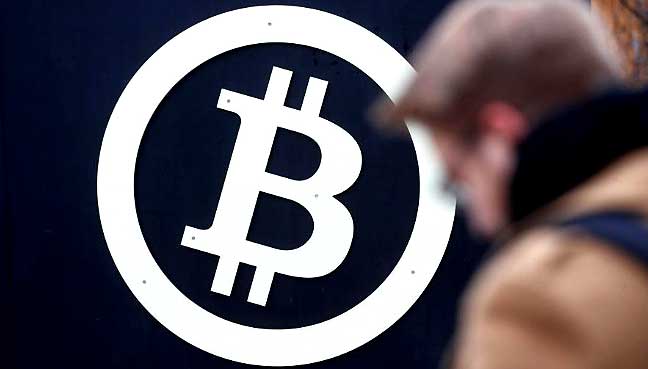Cryptocurrency and traditional currency represent two distinct forms of money that play pivotal roles in the global economy. While traditional currency—issued and regulated by governments—has been the foundation of financial systems for centuries, the emergence of cryptocurrencies like Bitcoin and Ethereum is reshaping the financial landscape. Understanding the key differences between cryptocurrency and traditional currency is crucial for navigating today’s evolving economic environment. This article explores the fundamental disparities between these two types of money, highlighting key characteristics, technologies, regulatory frameworks, security considerations, and future outlooks.
10 Steps to Understanding Cryptocurrency vs Traditional Currency

What is Cryptocurrency vs. Traditional Currency?
In the world of finance, cryptocurrency and traditional currency are two important types of money. Cryptocurrency is the innovative newcomer, while traditional currency is the time-tested pillar of global economies.
What is Cryptocurrency?
Cryptocurrency is digital money that uses cryptography for security and operates independently of central authorities or governments. Bitcoin, created in 2009 by the pseudonymous Satoshi Nakamoto, was the first cryptocurrency to introduce this decentralized concept.
What is Traditional Currency?
Traditional currency refers to physical and digital money issued by governments and central banks. It includes paper money (e.g., US Dollar, Euro) and coins, as well as digital currencies maintained through centralized systems.
The Evolution of Currency: From Bartering to Blockchain
The history of money has evolved significantly from early systems like bartering to modern forms of currency. Traditional currencies have developed over thousands of years, while cryptocurrencies emerged more recently, starting with Bitcoin in 2009.
Key Differences Between Cryptocurrency and Traditional Currency
1. Decentralization vs. Centralization
- Cryptocurrency: Operates on a decentralized blockchain network, which is a distributed ledger that records all transactions across multiple computers. This removes the need for intermediaries, like banks.
- Traditional Currency: Governed by central authorities, such as governments and central banks, which control monetary policy, interest rates, and money supply.
2. Physical vs. Digital
- Cryptocurrency: Exists only in digital form and can be transferred electronically without the need for physical banks or institutions.
- Traditional Currency: Exists both in physical form (cash) and as digital money managed by centralized institutions like banks.
3. Supply and Control
- Cryptocurrency: Most digital currencies have a limited supply (e.g., Bitcoin’s supply is capped at 21 million coins) to avoid inflationary pressures.
- Traditional Currency: Governments can print more money as needed, which can lead to inflation or deflation based on economic policy.
Blockchain Technology: The Backbone of Cryptocurrency
Blockchain is the underlying technology behind cryptocurrencies. It’s a decentralized ledger system that securely records all transactions in a transparent, immutable way. Blockchain’s features ensure the trustworthiness and security of cryptocurrencies.
Smart Contracts and Decentralized Apps (DApps)
Blockchain technology also enables smart contracts—self-executing contracts where terms are written in code—and decentralized applications (DApps) that run on blockchain platforms, offering a broad range of use cases beyond currency transactions.
Regulation: Traditional Currency vs. Cryptocurrency
Government Oversight and Legal Frameworks
- Traditional Currency: Is subject to strict government regulation, with central banks controlling monetary policy, ensuring economic stability, and providing legal tender protection.
- Cryptocurrency: Lacks universal regulatory oversight, which makes it susceptible to fraud, volatility, and potential illegal activity. Countries differ widely in their stance on cryptocurrency regulation, with some embracing it and others imposing bans or heavy restrictions.
Challenges in Regulating Cryptocurrency
The decentralized nature of cryptocurrency presents challenges for regulators, such as issues around money laundering, tax evasion, and consumer protection. Governments are working on frameworks to address these concerns while maintaining the benefits of decentralized finance.
Adoption and Usage Trends
Mainstream Acceptance and Merchant Adoption
While traditional currencies are widely accepted around the world, cryptocurrencies are slowly gaining traction. Many businesses now accept Bitcoin, Ethereum, and other cryptocurrencies as payment, though widespread adoption is still hindered by price volatility and regulatory uncertainty.
Transaction Speeds and Costs
- Cryptocurrencies: Offer faster and often cheaper cross-border transactions than traditional banking systems, though network congestion can sometimes slow down processing times.
- Traditional Currency: Transactions can be slower, especially for cross-border transfers, and often come with higher fees due to intermediary financial institutions.
Security and Privacy in Cryptocurrency and Traditional Currency
Cryptocurrency Wallet Security
With cryptocurrencies, users are responsible for securing their digital wallets. This includes protecting private keys from theft, hacking, and other cyber threats. Using hardware wallets and practicing good cybersecurity hygiene is crucial.
Privacy Concerns and Anonymity
Cryptocurrency transactions offer a degree of anonymity and pseudonymity, but this has raised concerns about illegal activities, such as money laundering and tax evasion. Traditional currencies, while also used for illicit activities, are subject to stronger regulatory scrutiny and tracking mechanisms.
The Future of Cryptocurrency and Traditional Currency
Emerging Technologies and Innovations
The future of both cryptocurrencies and traditional currencies is likely to be shaped by emerging technologies such as Central Bank Digital Currencies (CBDCs), blockchain innovations, and solutions for greater financial interoperability. These technologies could enhance the efficiency, security, and reach of both forms of money.
Scalability Issues and Environmental Concerns
Cryptocurrencies face challenges with scalability and energy consumption, particularly those using proof-of-work mining methods like Bitcoin. Meanwhile, traditional banking systems have their own inefficiencies but tend to consume less energy per transaction.
Conclusion: Cryptocurrency vs. Traditional Currency
The comparison between cryptocurrency and traditional currency reveals a dynamic and evolving landscape. As decentralized finance grows, the relationship between these two systems will likely evolve, creating opportunities and challenges for individuals, businesses, and regulators alike. The coexistence of traditional and digital currencies offers new ways to interact with money, invest, and participate in the global economy.
Frequently Asked Questions (FAQs)
- Can I use cryptocurrency for everyday transactions like traditional currency?
Yes, many businesses now accept cryptocurrencies like Bitcoin and Ethereum. However, usage is still limited due to price volatility and regulatory issues. - How is the value of cryptocurrency determined compared to traditional currency?
Cryptocurrency values are determined by market demand and supply, whereas traditional currency values are influenced by government policy, inflation rates, and interest rates. - Are cryptocurrencies legal and regulated like traditional currency?
Cryptocurrencies are subject to varying regulations across countries. Some governments fully regulate them, while others impose restrictions or bans. - What are the main security risks associated with using cryptocurrency compared to traditional currency?
Cryptocurrency users must be cautious of hacking, phishing attacks, and the loss of private keys. Traditional currency risks are mainly associated with theft and fraud, but these systems are typically backed by banking institutions for protection.








No Comments